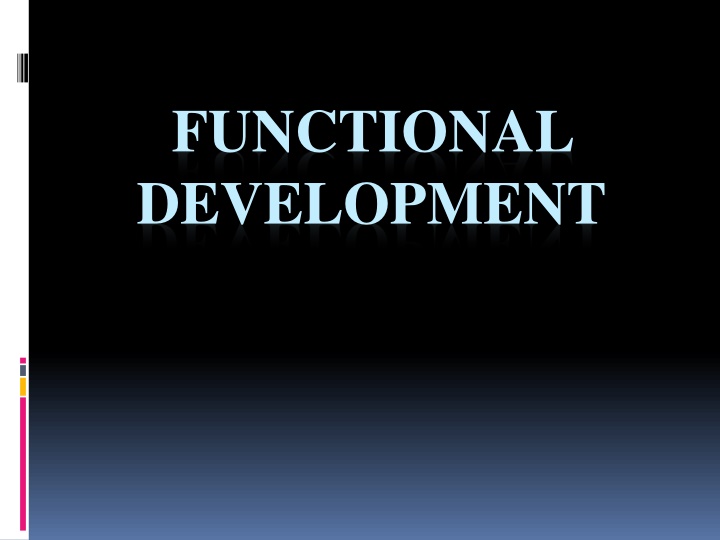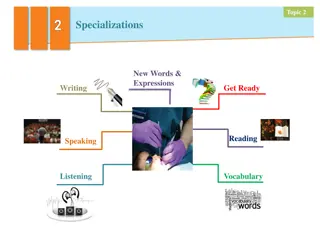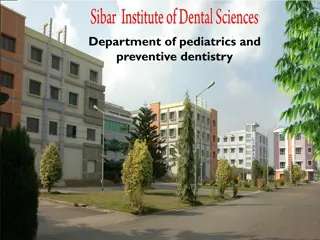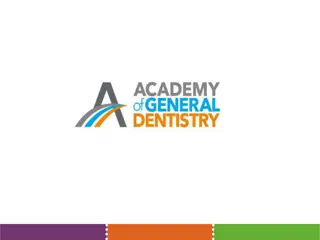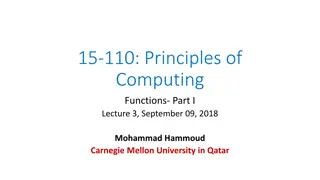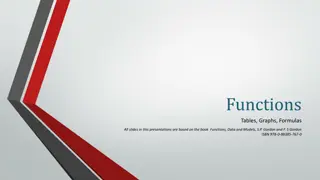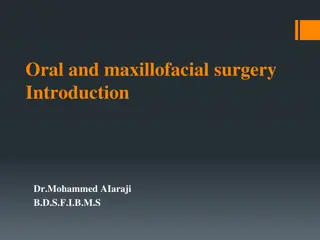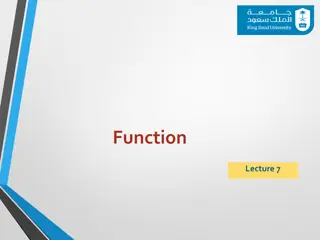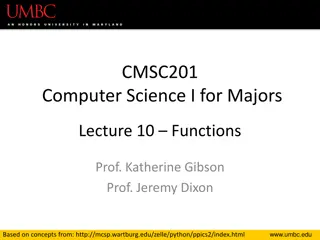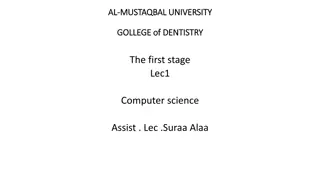Orofacial Development and Functions in Dentistry
Explore the intricate orofacial structures, including dental arches, naso-maxillary complex, mandible, and muscles of expression, mastication, and deglutition. Learn about the various functions performed by the orofacial complex, such as mastication, deglutition, respiration, and speech. Dive into the phases of mastication and deglutition, understanding the complexities involved in breaking down food and swallowing. Discover the differences between infantile and mature swallows, along with theories and phases of deglutition in dentistry.
Uploaded on Jul 20, 2024 | 1 Views
Download Presentation

Please find below an Image/Link to download the presentation.
The content on the website is provided AS IS for your information and personal use only. It may not be sold, licensed, or shared on other websites without obtaining consent from the author.If you encounter any issues during the download, it is possible that the publisher has removed the file from their server.
You are allowed to download the files provided on this website for personal or commercial use, subject to the condition that they are used lawfully. All files are the property of their respective owners.
The content on the website is provided AS IS for your information and personal use only. It may not be sold, licensed, or shared on other websites without obtaining consent from the author.
E N D
Presentation Transcript
FUNCTIONAL DEVELOPMENT
INTRODUCTION : Orofacial structures - Dental arches Naso-maxillary complex Mandible Muscles of facial expression Muscles of mastication & deglutition
Various functions performed by the orofacial complex Mastication Deglutition Respiration Speech Passive muscle function
Mastication : Complex activity aimed at breaking down food preparatory to swallowing Murphy - 6 phases 1) preparatory food positioned over the tongue 2) food contact momentary pause, evaluation of viscosity 3) crushing 4) tooth contact 5) guiding phase contact become unilateral transgression of mandibular molars 6) centric occlusion
Deglutition : Act of swallowing Types Infantile Swallow Mature Swallow
Infantile / Immature / visceral swallow 1 The jaws are apart, with the tongue between the gum pads 2. The mandible is stabilized mainly by contraction of the muscles innervated by the VII (seventh) cranial nerve and the interposed tongue 3. The swallow is guided and to a great extent controlled by sensory interchange between the lips and the tongue
MATURE / SOMATIC SWALLOW Characteristic features 1. The teeth are together 2. The mandible is stabilized - mandibular elevators 3. The tongue tip is held against the palate above and behind the incisors 4. There are minimal contractions of the lips during the mature swallow.
Theories of deglutition: 1) Theory of constant propulsion 2) Theory of oral expulsion 3) Theory of negative pressure 4) Theory of integral function
Phases of deglutition: Oral phase
RESPIRATION: Inherent reflex evoked spontaneously at birth aided by posture of mandible & hyoid normal nasal breathing
Passive Muscular function Neutral zone
Trajectorial theory of forces (Wolff s Law)
Trajectorial theory : Orientation of the bony trabeculae - pathways of maximal pressure & tension Trabeculae are thicker where stresses are greater
Vertical trajectories of maxilla: a) Fronto-nasal buttress b) Malar-zygomatic buttress c) Ptearygoid buttress
Horizontal trajectories : a. Hard palate b. Orbital ridges c. Zygomatic arches d. Palatal bones e. Lesser wings of sphenoid
Wolfs Law : Bone --- pressure/ tension --- remodeling --- change in form Architecture of the bone is such that it can resist the forces which are brought to bear upon it with the use of as little tissue as possible
Every change in the form and the function of a bone or of their function alone is followed by certain definite changes in their internal architecture, and equally definite secondary alterations in their external confirmation
CONCLUSION: An relationship, but unless he takes into consideration the effects of the use of these teeth, unless he makes allowances for the manifold environmental functional influences, the delicately responsive bony structures are apt to change, and the tooth positions will change with them. orthodontist can establish a perfect occlusal GRABER
